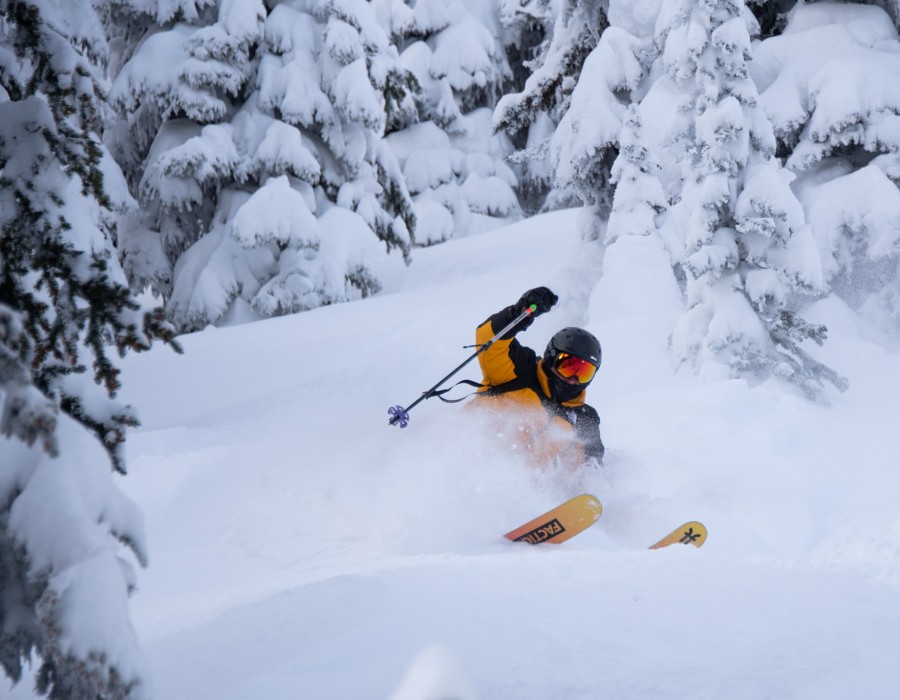Introduction
Skiing deep snow, often referred to as powder skiing, is a thrilling and unique experience for winter sports enthusiasts. Unlike skiing on groomed trails, deep snow offers a softer, more forgiving surface that can be both exhilarating and challenging. In this blog, we’ll explore what makes skiing deep snow special, share essential tips and techniques to help you master this skill, and recommend gear that will enhance your snowy adventures.
What is Deep Snow Skiing?
Deep snow skiing involves navigating through snow that hasn’t been compacted or groomed, often found in off-piste areas or backcountry terrain. This type of snow, known as powder, is light, fluffy, and can vary in depth from a few inches to several feet. Skiing in such conditions requires a different approach compared to skiing on hard-packed or groomed slopes.
Why is Deep Snow Skiing Different?
- Softness and Buoyancy: Powder snow is much softer than regular snow, making it feel like you’re floating rather than skiing. This buoyancy can make skiing more enjoyable but also requires adjustments in technique.
- Resistance: While the softness of deep snow is pleasant, it also creates more resistance, which can slow you down. This requires you to adapt your skiing style to maintain speed and control.
- Variable Conditions: Deep snow can vary significantly depending on weather conditions and terrain, meaning each run can feel different from the last.
Tips for Skiing Deep Snow
- Stay Centered: Keep your weight centered over your skis. Leaning too far forward or backward can cause you to lose balance and control. Imagine a slight lean back to help keep your tips from diving too deep into the snow.
- Use a Wide Stance: A wider stance helps distribute your weight more evenly, allowing you to stay afloat on the snow. It also gives you better control and stability.
- Keep Your Speed Up: Maintaining speed helps you stay on top of the snow and prevents you from getting bogged down. However, be cautious not to go too fast, as it can be harder to control.
- Make Smooth Turns: Avoid sharp, aggressive turns. Instead, make smooth, sweeping turns to help you glide through the snow more easily.
- Practice Your Technique: If you’re new to deep snow skiing, practice in smaller amounts of powder before tackling deeper terrain. This will help you get a feel for how to adjust your technique.
Essential Gear for Deep Snow Skiing
- Powder Skis: Powder skis are wider and have a different shape compared to regular skis. They help you stay afloat and provide better control in deep snow.
- Ski Poles: Adjustable poles can help with balance and maneuvering through powder. Look for poles with a larger basket to prevent them from sinking too deeply into the snow.
- Avalanche Safety Gear: If you’re venturing into backcountry terrain, make sure you have essential avalanche safety gear, including a beacon, probe, and shovel. Familiarize yourself with how to use this gear and check avalanche forecasts before heading out.
- Proper Clothing: Layer your clothing to stay warm and dry. Waterproof and breathable outer layers are crucial to keep you comfortable in snowy conditions.
Conclusion
Skiing deep snow is a unique and rewarding experience that offers a different kind of thrill compared to skiing on groomed trails. By understanding the characteristics of powder snow and adapting your technique, you can make the most of this exciting winter sport. Remember to equip yourself with the right gear and take necessary safety precautions to ensure a fantastic and safe adventure in the deep snow.
Happy skiing, and enjoy the powder!





Comments